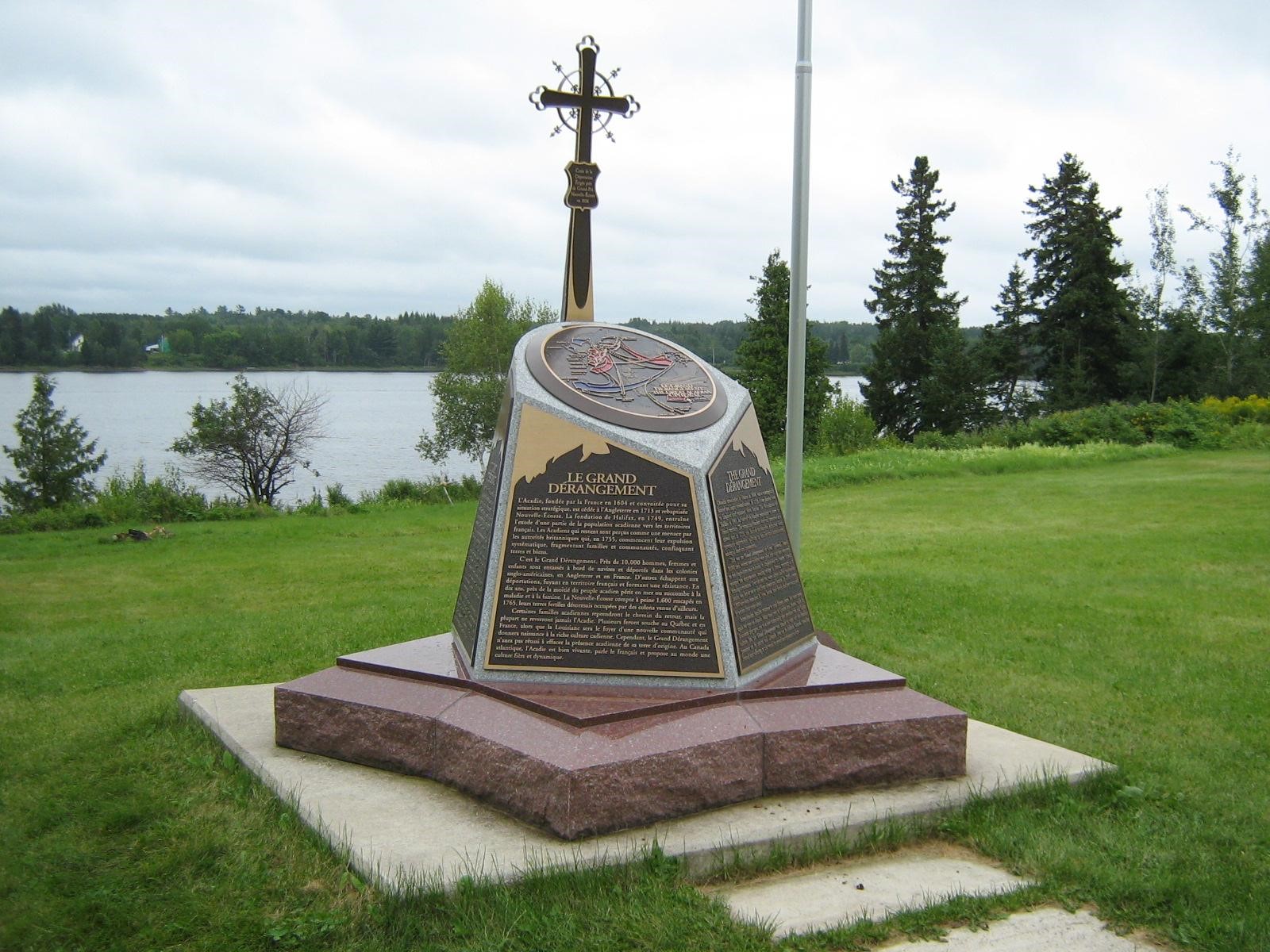There is still a belief that the deportation of the Acadians never took place and that the publication Evangeline by Henry Longfellow in 1847 is only a superb epic poem narrating a mythical rather than historical epic. In addition, in the New York Gazette of August 23, 1755 the following anonymous opinion was published “We are now upon a great and noble scheme of fending the neutral French (Acadians) out of this province (Nova Scotia) … If we effect their expulsion it will be one of the greatest things that ever the English did in America“. This ideology was also published in several other Anglo-American colonies, notably in Pennsylvania and Maryland. On February 9, 2005, 250 years later, William Grimes, an American journalist, highlights this fallacious thought under the rubric Paradise Lost in an ‘Ethnic Cleansing’ in The New York Times.

On the upper face of the monument, at the foot of the iconic cross of the deportation, the seaport of the nine Anglo-American colonies involved in the Great Acadian Upheaval is clearly identified. Given the limited number of taxpayers in their respective jurisdiction and their lack of law enforcement personnel in the event of major racial or ethnic issues, the colonies (provinces) of Delaware, New Jersey, Rhode Island, and New Hampshire were not selected by Charles Lawrence, governor of Nova Scotia, as deportation landing sites. It should be noted that Delaware and Pennsylvania did share the same governor in 1755. And, the boundaries between New Jersey and New York were imprecise. In addition, the colonial armed forces of Rhode Island (400 men) and New Hampshire (500 men) were attempting to conquer French Fort Saint-Frédéric (now Crown Point, New York) on the shores of Lake Champlain.

Since 2015, these memorials of the Great Acadian Upheaval are more and more in demand. They are part of an international network to raise awareness of significant sites related to the history and vitality of Acadian communities, as well as the advancement of New Acadia. Similar monuments are proposed for the vast Atlantic coast of the United States, in Boston, New London, New York, Philadelphia, Annapolis, Portsmouth (possibly Richmond in Virginia), Raleigh (in North Carolina where Edenton is located), Charleston, and Savannah. Like the Deportation and Migration Chronology of the Acadians 1755-1816 by Paul Delaney, this website addresses separately and distinctly each of the nine coastal seaports with the intention of counteracting the belief that the deportation of the Acadians is a myth.
According to an ancient proverb, a people full of vitality is endowed with a singular force. It is often said that the vitality of the Acadian diaspora is not based on the misfortunes of its fate but on the ardor of its will.

Let it be known that the first reason (whereas) given by the Proclamation of Queen Elizabeth II of the United Kingdom for designating July 28 of each year (from 2005) “Day of Commemoration of the Great Upheaval” is the explicit recognition of the Acadians’ vitality. Moreover, this 2003 Royal Proclamation is also an imposing effort to put an end to the long-held belief that the deportation of the Acadians is nothing more than an infox.